Human Spaceflights to the Moon
![]()
International Flight No. 42Apollo 16USA |
 |
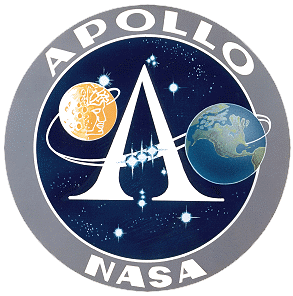 |
![]()
Launch- and landing data
walkout photo |
 |
|||||||||||||||||||||||||||||||
alternative crew photo |
alternative crew photo |
|||||||||||||||||||||||||||||||
alternative crew photo |
alternative crew photo |
|||||||||||||||||||||||||||||||
alternative crew photo |
||||||||||||||||||||||||||||||||
Crew
| No. | Surname | Given names | Position | Flight No. | Duration | Orbits | |
| 1 | Young | John Watts | CDR | 4 | 11d 01h 51m 04s | 1,5 | |
| 2 | Mattingly | Thomas Kenneth II "Ken" | CMP | 1 | 11d 01h 51m 04s | 1,5 | |
| 3 | Duke | Charles Moss, Jr. "Chuck" | LMP | 1 | 11d 01h 51m 04s | 1,5 |
Crew seating arrangement
|
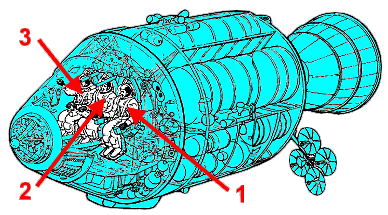 |
|
||||||||||||||||
Backup Crew
|
 |
||||||||||||||||||||
alternative crew photo |
Support Crew
|
|||||||||||||
Hardware
| Launch vehicle: | Saturn V (SA-511) |
| Spacecraft: | Apollo (CSM-113 „Casper“ / LM-11 „Orion“) |
Flight
|
Launch from Cape Canaveral (KSC) and
landing 2000 km south of Hawaii in the Pacific Ocean.
CSM was named "Casper" and the
LM "Orion". The Command Module (CM) was a conical pressure vessel with a maximum diameter of 3.9 m at its base and a height of 3.65 m. It was made of an aluminum honeycomb sandwich bonded between sheet aluminum alloy. The base of the CM consisted of a heat shield made of brazed stainless steel honeycomb filled with a phenolic epoxy resin as an ablative material and varied in thickness from 1.8 to 6.9 cm. At the tip of the cone was a hatch and docking assembly designed to mate with the lunar module. The CM was divided into three compartments. The forward compartment in the nose of the cone held the three 25.4 m diameter main parachutes, two 5 m drogue parachutes, and pilot mortar chutes for Earth landing. The aft compartment was situated around the base of the CM and contained propellant tanks, reaction control engines, wiring, and plumbing. The crew compartment comprised most of the volume of the CM, approximately 6.17 cubic meters of space. Three astronaut couches were lined up facing forward in the center of the compartment. A large access hatch was situated above the center couch. A short access tunnel led to the docking hatch in the CM nose. The crew compartment held the controls, displays, navigation equipment and other systems used by the astronauts. The CM had five windows: one in the access hatch, one next to each astronaut in the two outer seats, and two forward-facing rendezvous windows. Five silver/zinc-oxide batteries provided power after the CM and SM detached, three for re-entry and after landing and two for vehicle separation and parachute deployment. The CM had twelve 420 N nitrogen tetroxide/hydrazine reaction control thrusters. The CM provided the re-entry capability at the end of the mission after separation from the Service Module. The Service Module (SM) was a cylinder 3.9 meters in diameter and 7.6 m long which was attached to the back of the CM. The outer skin of the SM was formed of 2.5 cm thick aluminum honeycomb panels. The interior was divided by milled aluminum radial beams into six sections around a central cylinder. At the back of the SM mounted in the central cylinder was a gimbal mounted re-startable hypergolic liquid propellant 91,000 N engine and cone shaped engine nozzle. Attitude control was provided by four identical banks of four 450 N reaction control thrusters each spaced 90 degrees apart around the forward part of the SM. The six sections of the SM held three 31-cell hydrogen oxygen fuel cells which provided 28 volts, two cryogenic oxygen and two cryogenic hydrogen tanks, four tanks for the main propulsion engine, two for fuel and two for oxidizer, and the subsystems the main propulsion unit. Two helium tanks were mounted in the central cylinder. Electrical power system radiators were at the top of the cylinder and environmental control radiator panels spaced around the bottom. The lunar module (LM) was a two-stage vehicle designed for space operations near and on the Moon. The spacecraft mass of 15,065 kg was the mass of the LM including astronauts, propellants and expendables. The dry mass of the ascent stage was 2180 kg and it held 2639 kg of propellant. The descent stage dry mass was 2034 kg and 8212 kg of propellant were onboard initially. The ascent and descent stages of the LM operated as a unit until staging, when the ascent stage functioned as a single spacecraft for rendezvous and docking with the command and service module (CSM). The descent stage comprised the lower part of the spacecraft and was an octagonal prism 4.2 meters across and 1.7 m thick. Four landing legs with round footpads were mounted on the sides of the descent stage and held the bottom of the stage 1.5 m above the surface. The distance between the ends of the footpads on opposite landing legs was 9.4 m. One of the legs had a small astronaut egress platform and ladder. A one meter long conical descent engine skirt protruded from the bottom of the stage. The descent stage contained the landing rocket, two tanks of aerozine 50 fuel, two tanks of nitrogen tetroxide oxidizer, water, oxygen and helium tanks and storage space for the lunar equipment and experiments, and in the case of Apollo 15, 16, and 17, the lunar rover. The descent stage served as a platform for launching the ascent stage and was left behind on the Moon. The ascent stage was an irregularly shaped unit approximately 2.8 m high and 4.0 by 4.3 meters in width mounted on top of the descent stage. The ascent stage housed the astronauts in a pressurized crew compartment with a volume of 6.65 cubic meters which functioned as the base of operations for lunar operations. There was an ingress-egress hatch in one side and a docking hatch for connecting to the CSM on top. Also mounted along the top were a parabolic rendezvous radar antenna, a steerable parabolic S-band antenna, and 2 in-flight VHF antennas. Two triangular windows were above and to either side of the egress hatch and four thrust chamber assemblies were mounted around the sides. At the base of the assembly was the ascent engine. The stage also contained an aerozine 50 fuel and an oxidizer tank, and helium, liquid oxygen, gaseous oxygen, and reaction control fuel tanks. There were no seats in the LM. A control console was mounted in the front of the crew compartment above the ingress-egress hatch and between the windows and two more control panels mounted on the side walls. The ascent stage was launched from the Moon at the end of lunar surface operations and returned the astronauts to the CSM. The descent engine was a deep-throttling ablative rocket with a maximum thrust of about 45,000 N mounted on a gimbal ring in the center of the descent stage. The ascent engine was a fixed, constant-thrust rocket with a thrust of about 15,000 N. Maneuvering was achieved via the reaction control system, which consisted of the four thrust modules, each one composed of four 450 N thrust chambers and nozzles pointing in different directions. Telemetry, TV, voice, and range communications with Earth were all via the S-band antenna. VHF was used for communications between the astronauts and the LM, and the LM and orbiting CSM. There were redundant transceivers and equipment for both S-band and VHF. An environmental control system recycled oxygen and maintained temperature in the electronics and cabin. Power was provided by 6 silver-zinc batteries. Guidance and navigation control were provided by a radar ranging system, an inertial measurement unit consisting of gyroscopes and accelerometers, and the Apollo guidance computer. The Apollo Lunar Surface Experiments Package (ALSEP) consisted of a set of scientific instruments emplaced at the landing site by the astronauts. The instruments were arrayed around a central station which supplied power to run the instruments and communications so data collected by the experiments could be relayed to Earth. The central station was a 25 kg box with a stowed volume of 34,800 cubic cm. Thermal control was achieved by passive elements (insulation, reflectors, thermal coatings) as well as power dissipation resistors and heaters. Communications with Earth were achieved through a 58 cm long, 3.8 cm diameter modified axial-helical antenna mounted on top of the central station and pointed towards Earth by the astronauts. Transmitters, receivers, data processors and multiplexers were housed within the central station. Data collected from the instruments were converted into a telemetry format and transmitted to Earth. The ALSEP system and instruments were controlled by commands from Earth. The SNAP-27 model RTG produced the power to run the ALSEP operations. The generator consisted of a 46 cm high central cylinder and eight radiating rectangular fins with a total tip-to-tip diameter of 40 cm. The central cylinder had a thinner concentric inner cylinder inside, and the two cylinders were attached along their surfaces by 442 spring-loaded lead-telluride thermoelectric couples mounted radially along the length of the cylinders. The generator assembly had a total mass of 17 kg. The power source was an approximately 4 kg fuel capsule in the shape of a long rod which contained plutonium-238 and was placed in the inner cylinder of the RTG by the astronauts on deployment. Plutonium-238 decays with a half-life of 89.6 years and produces heat. This heat would conduct from the inner cylinder to the outer via the thermocouples which would convert the heat directly to electrical power. Excess heat on the outer cylinder would be radiated to space by the fins. The RTG produced approximately 70 W DC at 16 V. (63.5 W after one year.) The electricity was routed through a cable to a power conditioning unit and a power distribution unit in the central station to supply the correct voltage and power to each instrument. The Lunar Roving Vehicle (LRV) was an electric vehicle designed to operate in the low-gravity vacuum of the Moon and to be capable of traversing the lunar surface, allowing the Apollo astronauts to extend the range of their surface extravehicular activities. Three LRVs were driven on the Moon, one on Apollo 15 by astronauts David Scott and James Irwin, one on Apollo 16 by John Young and Charles Duke, and one on Apollo 17 by Eugene Cernan and Harrison Schmitt. Each rover was used on three traverses, one per day over the three-day course of each mission. On Apollo 15 the LRV was driven a total of 27.8 km in 3 hours, 2 minutes of driving time. The longest single traverse was 12.5 km and the maximum range from the LM was 5.0 km. On Apollo 16 the vehicle traversed 26.7 km in 3 hours 26 minutes of driving. The longest traverse was 11.6 km and the LRV reached a distance of 4.5 km from the LM. On Apollo 17 the rover went 35.9 km in 4 hours 26 minutes total drive time. The longest traverse was 20.1 km and the greatest range from the LM was 7.6 km. The Lunar Roving Vehicle had a mass of 210 kg and was designed to hold a payload of an additional 490 kg on the lunar surface. The frame was 3.1 meters long with a wheelbase of 2.3 meters. The maximum height was 1.14 meters. The frame was made of aluminum alloy 2219 tubing welded assemblies and consisted of a 3-part chassis which was hinged in the center so it could be folded up and hung in the Lunar Module quad 1 bay. It had two side-by-side foldable seats made of tubular aluminum with nylon webbing and aluminum floor panels. An armrest was mounted between the seats, and each seat had adjustable footrests and a velcro seatbelt. A large mesh dish antenna was mounted on a mast on the front center of the rover. The suspension consisted of a double horizontal wishbone with upper and lower torsion bars and a damper unit between the chassis and upper wishbone. Fully loaded the LRV had a ground clearance of 36 cm. The wheels consisted of a spun aluminum hub and an 81.8 cm diameter, 23 cm wide tire made of zinc coated woven 0.083 cm diameter steel strands attached to the rim and discs of formed aluminum. Titanium chevrons covered 50% of the contact area to provide traction. Inside the tire was a 64.8 cm diameter bump stop frame to protect the hub. Dust guards were mounted above the wheels. Each wheel had its own electric drive, a DC series wound 0.25 hp motor capable of 10,000 rpm, attached to the wheel via an 80:1 harmonic drive, and a mechanical brake unit. Maneuvering capability was provided through the use of front and rear steering motors. Each series wound DC steering motor was capable of 0.1 hp. Both sets of wheels would turn in opposite directions, giving a steering radius of 3.1 meters, or could be decoupled so only one set would be used for steering. Power was provided by two 36-volt silver-zinc potassium hydroxide non-rechargeable batteries with a capacity of 121 amp-hr. These were used to power the drive and steering motors and also a 36-volt utility outlet mounted on front of the LRV to power the communications relay unit or the TV camera. Passive thermal controls kept the batteries within an optimal temperature range. A T-shaped hand controller situated between the two seats controlled the four drive motors, two steering motors and brakes. Moving the stick forward powered the LRV forward, left and right turned the vehicle left or right, pulling backwards activated the brakes. Activating a switch on the handle before pulling back would put the LRV into reverse. Pulling the handle all the way back activated a parking brake. The control and display modules were situated in front of the handle and gave information on the speed, heading, pitch, and power and temperature levels. Navigation was based on continuously recording direction and distance through use of a directional gyro and odometer and inputting this data to a computer which would keep track of the overall direction and distance back to the LM. There was also a Sun-shadow device which could give a manual heading based on the direction of the Sun, using the fact that the Sun moved very slowly in the sky. The image at left shows a diagram of the layout of the control and display module, the Sun-shadow device is at top center between the heading and speed readouts. Deployment of the LRV from the LM quad 1 by the astronauts was achieved with a system of pulleys and braked reels using ropes and cloth tapes. The rover was folded and stored in quad 1 with the underside of the chassis facing out. One astronaut would climb the egress ladder on the LM and release the rover, which would then be slowly tilted out by the second astronaut on the ground through the use of reels and tapes. As the rover was let down from the bay most of the deployment was automatic. The rear wheels folded out and locked in place and when they touched the ground the front of the rover could be unfolded, the wheels deployed, and the entire frame let down to the surface by pulleys. The rover components locked into place upon opening. Cabling, pins, and tripods would then be removed and the seats and footrests raised. After switching on all the electronics, the vehicle was ready to back away from the LM. The image at right shows an earlier version of the planned deployment which does not exactly match the final sequence, note for example that the rover is facing away from the LM after deployment. The launch of Apollo 16 was delayed one month from March 17, 1972 to April 16, 1972. This was the first launch delay in the Apollo program due to a technical problem. During the delay, the spacesuits, a spacecraft separation mechanism and batteries in the Lunar Module (LM) were modified and tested. There were concerns that the explosive mechanism designed to separate the docking ring from the Command Module would not create enough pressure to completely sever the ring. This, along with a dexterity issue in John Young's spacesuit and fluctuations in the capacity of the Lunar Module batteries, required investigation and trouble-shooting. In January 1972, three months before the planned April launch date, a fuel tank in the Command Module was accidentally damaged during a routine test. The rocket was returned to the Vehicle Assembly Building, the fuel tank replaced and the rocket returned to the launch pad in February in time for the scheduled launch Apollo 16 launched on April 16, 1972 at 17:54:00 UTC on Saturn V SA-511 from Pad 39-A at Kennedy Space Center. (The launch was postponed from the originally scheduled date, March 17, 1972 because of a docking ring jettison malfunction.) The spacecraft entered Earth parking orbit at 18:05:56 UTC and translunar injection took place at 20:27:37 UTC. The CSM and S-IVB stage separated at 20:58:59 UTC and CSM-LM docking was achieved at 21:15:53 UTC. The S-IVB stage was released into a lunar impact trajectory, but due to an earlier problem with the auxiliary propulsion system (APS) helium regulators, which resulted in continuous venting and loss of helium, the second APS burn could not be made. Tracking of the S-IVB was lost on April 17, 1972 at 21:03 UTC due to a transponder failure. (The S-IVB stage impacted the Moon on April 19, 1972 at 21:02:04 UTC at 1.3 N, 23.8 W with a velocity of 2.5 to 2.6 km/s at a 79-degree angle from the horizontal, as estimated from the Apollo 12, 14 and 16 seismic station data.) A mid-course correction was performed at 00:33:01 UTC on April 18, 1972. During translunar coast a CSM navigation problem was discovered in which a false indication would cause loss of inertial reference, this was solved by a real-time change in the computer program. The SIM door was jettisoned on April 19, 1972 at 15:57:00 UTC and lunar orbit insertion took place at 20:22:28 UTC. Two revolutions later the orbit was lowered to one with a perilune of 20 km. John Young, Thomas Mattingly and Charles Duke continued preparing for Lunar Module activation and undocking shortly after waking up to begin flight day five. The boom that extended the mass spectrometer out from the Command/Service Module's Scientific Instruments Bay was stuck in a semi-deployed position. It was decided that John Young and Charles Duke would visually inspect the boom after undocking from the CSM in the LM. John Young and Charles Duke entered the LM for activation and checkout of the spacecraft's systems. Despite entering the LM fourty minutes ahead of schedule, John Young and Charles Duke completed preparations only ten minutes early due to numerous delays in the process. With the preparations finished, John Young and Charles Duke undocked in the LM Orion from Thomas Mattingly in the Command/Service Module Casper 96 hours, 13 minutes, 13 seconds into the mission. For the rest of the two spacecrafts' pass over the near side of the Moon, Thomas Mattingly prepared to shift Casper to a circular orbit while John Young and Duke prepared Orion for the descent to the lunar surface. At this point, during tests of the CSM's steerable rocket engine in preparation for the burn to modify the craft's orbit, a malfunction occurred in the engine's backup system. According to mission rules, Orion would have then re-docked with Casper, in case mission control decided to abort the landing and use the Lunar Module's engines for the return trip to Earth. After several hours of analysis, however, mission controllers determined that the malfunction could be worked around and John Young and Charles Duke could proceed with the landing. As a result of this, powered descent to the lunar surface began about six hours behind schedule. Because of the delay, John Young and Charles Duke began their descent to the surface at an altitude higher than that of any previous mission, at 20.1 kilometers (10.9 nmi). At an altitude of about 4,000 m (13,000 ft), John Young was able to view the landing site in its entirety. Throttle-down of the LM's landing engine occurred on time and the spacecraft tilted forward to its landing orientation at an altitude of 2,200 m (7,200 ft). The Lunar Module Orion, with John Young and Charles Duke inside, landed 270 m (890 ft) north and 60 m (200 ft) west of the planned landing site at 104 hours, 29 minutes, and 35 seconds into the mission, at 2:23:35 UTC on April 21, 1972 Apollo 15 marked the fifth manned moon landing. As landing site scientists choose the Descartes Highlands. The lunar surface stay-time was 71h 2m. A LRV was used for the second time. After landing, John Young and Charles Duke began powering down some of the LM's systems to conserve battery power. Upon completing their initial adjustments, the pair configured Orion for their three-day stay on the lunar surface, removed their spacesuits and took initial geological observations of the immediate landing site. They then settled down for their first meal on the surface. After eating, they configured the cabin for their first sleep period on the Moon. Three EVAs were performed by John Young and Charles Duke. The first EVA was performed on April 21, 1972 (7h 11m). After the pair donned and pressurized their spacesuits and depressurized the Lunar Module cabin, John Young climbed out onto the "porch" of the LM, a small platform above the ladder. Charles Duke handed John Young a jettison bag full of trash to dispose of on the surface. John Young then lowered the equipment transfer bag (ETB), containing equipment for use during the EVA, to the surface. John Young descended the ladder and, upon setting foot on the lunar surface, became the ninth human to walk on the Moon. Upon stepping onto the surface, John Young expressed his sentiments about being there: "There you are: Mysterious and Unknown Descartes. Highland plains. Apollo 16 is gonna change your image." Charles Duke soon descended the ladder and joined John Young on the surface, becoming the tenth and youngest human to walk on the Moon, at age 36. After setting foot on the lunar surface, Charles Duke expressed his excitement, commenting: "Fantastic! Oh, that first foot on the lunar surface is super, Tony!" The pair's first task of the moonwalk was to unload the Lunar Roving Vehicle (LRV), the Far Ultraviolet Camera/Spectrograph (UVC), and other equipment, from the Lunar Module. This was done without problems. On first driving the lunar rover, John Young discovered that the rear steering was not working. He alerted mission control to the problem before setting up the television camera and planting the flag of the United States with Charles Duke. The day's next task was to deploy the Apollo Lunar Surface Experiments Package (ALSEP); while they were parking the lunar rover, on which the TV camera was mounted, to observe the deployment, the rear steering began functioning without explanation. While deploying a heat-flow experiment that had burned up with the Lunar Module Aquarius on Apollo 13 and had been attempted without success on Apollo 15, a cable was inadvertently snapped after getting caught around John Young's foot. After ALSEP deployment, they collected samples in the vicinity. About four hours after the beginning of EVA-1, they mounted the lunar rover and drove to the first geologic stop, Plum Crater, a 36 m-wide (118 ft) crater on the rim of Flag Crater, a crater 290 m (950 ft) across. There, at a distance of 1.4 km (0.87 mi) from the LM, they sampled material from the vicinity of Flag Crater, which scientists believed penetrated through the upper regolith layer to the underlying Cayley Formation. It was there that John Young retrieved, at the request of mission control, the largest rock returned by an Apollo mission, a breccia nicknamed Big Muley after mission geology principal investigator Bill Muehlberger. The next stop of the day was Buster Crater, about 1.6 km (0.99 mi) from the LM. There, Charles Duke took pictures of Stone Mountain and South Ray Crater while John Young deployed a magnetic field experiment. At that point, scientists began to reconsider their pre-mission hypothesis that Descartes had been the setting of ancient volcanic activity, as the two astronauts had yet to find any volcanic material. Following their stop at Buster, John Young did a demonstration drive of the lunar rover while Charles Duke filmed with a 16 mm movie camera. After completing more tasks at the ALSEP, they returned to the LM to close out the moonwalk. The second EVA was performed on April 22, 1972 (7h 23m). The second lunar excursion's primary objective was to visit Stone Mountain to climb up the slope of about 20 degrees to reach a cluster of five craters known as "Cinco Craters". After preparations for the day's moonwalk were completed, the astronauts climbed out of the Lunar Module. After departing the immediate landing site in the lunar rover, they arrived at the day's first destination, the Cinco Craters, 3.8 km (2.4 mi) from the LM. At 152 m (499 ft) above the valley floor, the pair were at the highest elevation above the LM of any Apollo mission. After marveling at the view from the side of Stone Mountain, which Charles Duke described as "spectacular", the astronauts gathered samples in the vicinity. After spending 54 minutes on the slope, they climbed aboard the lunar rover en route to the day's second stop, station five, a crater 20 m (66 ft) across. There, they hoped to find Descartes material that had not been contaminated by ejecta from South Ray Crater, a large crater south of the landing site. The samples they collected there, although their origin is still not certain, are, according to geologist Don Wilhelms, "a reasonable bet to be Descartes". The next stop, station six, was a 10 m-wide (33 ft) blocky crater, where the astronauts believed they could sample the Cayley Formation as evidenced by the firmer soil found there. Bypassing station seven to save time, they arrived at station eight on the lower flank of Stone Mountain, where they sampled material on a ray from South Ray Crater for about an hour. There, they collected black and white breccias and smaller, crystalline rocks rich in plagioclase. At station nine, an area known as the "Vacant Lot", which was believed to be free of ejecta from South Ray, they spent about 40 minutes gathering samples. Twenty-five minutes after departing station nine, they arrived at the final stop of the day, halfway between the ALSEP site and the LM. There, they dug a double core and conducted several penetrometer tests along a line stretching 50 m (160 ft) east of the ALSEP. At the request of John Young and Charles Duke, the moonwalk was extended by ten minutes. After returning to the LM to wrap up the second lunar excursion, they climbed back inside the landing craft's cabin, sealing and pressurizing the interior. The third and final EVA was on April 23, 1972 (5h 40m). During the third and final lunar excursion, they were to explore North Ray Crater, the largest of any of the craters any Apollo expedition had visited. After exiting Orion, the pair drove the lunar rover 0.8 km (0.50 mi) away from the LM before adjusting their heading to travel 1.4 km (0.87 mi) to North Ray Crater. The drive was smoother than that of the previous day, as the craters were more shallow and boulders were less abundant north of the immediate landing site. Boulders gradually became larger and more abundant as they approached North Ray in the lunar rover. Upon arriving at the rim of North Ray Crater, they were 4.4 km (2.7 mi) away from the LM. After their arrival, the duo took photographs of the 1 km (0.62 mi) wide and 230 m (750 ft) deep crater. They visited a large boulder, taller than a four-story building, which became known as 'House Rock'. Samples obtained from this boulder delivered the final blow to the pre-mission volcanic hypothesis, proving it incorrect. House Rock had numerous bullet hole-like marks where micrometeroids from space had impacted the rock. About 1 hour and 22 minutes after arriving, they departed for station 13, a large boulder field about 0.5 km (0.31 mi) from North Ray. On the way, they set a lunar speed record, travelling at an estimated 17.1 kilometers per hour (10.6 mph) downhill. They arrived at a 3 m (9.8 ft) high boulder, which they called 'Shadow Rock'. Here, they sampled permanently shadowed soil. During this time, Thomas Mattingly was preparing the Command/Service Module in anticipation their return approximately six hours later. After three hours and six minutes, they returned to the LM, where they completed several experiments and offloaded the rover. A short distance from the LM, Charles Duke placed a photograph of his family and a United States Air Force commemorative medallion on the surface. John Young drove the rover to a point about 90 m (300 ft) east of the LM, known as the 'VIP site', so its television camera, controlled remotely by mission control, could observe Apollo 16's liftoff from the Moon. The LM lifted off from the Moon at 01:25:48 UTC on April 24, 1972 after 71 hours, 2 minutes on the lunar surface. Eight minutes before departing the lunar surface, capsule communicator (CAPCOM) James Irwin notified John Young and Charles Duke from mission control that they were go for liftoff. Two minutes before launch, they activated the "Master Arm" switch and then the "Abort Stage" button, after which they awaited ignition of Orion’s ascent stage engine. When the ascent stage ignited, small explosive charges severed the ascent stage from the descent stage and cables connecting the two were severed by a guillotine-like mechanism. Six minutes after liftoff, at a speed of about 5,000 kilometers per hour (3,100 mph), John Young and Charles Duke reached lunar orbit. John Young and Charles Duke successfully rendezvoused and re-docked with Thomas Mattingly in the Command/Service Module. To minimize the transfer of lunar dust from the LM cabin into the CSM, John Young and Charles Duke cleaned the cabin before opening the hatch separating the two spacecraft. After opening the hatch and reuniting with Thomas Mattingly, the crew transferred the samples John Young and Charles Duke had collected on the surface into the CSM for transfer to Earth. After transfers were completed, the crew would sleep before jettisoning the empty lunar module ascent stage the next day, when it was to be crashed intentionally into the lunar surface. The Apollo 16 subsatellite (PFS-2) was a small satellite released into lunar orbit from the Apollo 16 Service Module. Its main objectives were to study the plasma, particle, and magnetic field environment of the Moon and map the lunar gravity field. Specifically, it measured plasma and energetic particle intensities and vector magnetic fields, and facilitated tracking of the satellite velocity to high precision. A basic requirement was that the satellite acquire fields and particle data everywhere on the orbit around the Moon. The subsatellite was virtually identical to the one deployed by Apollo 15. The Moon's roughly circular orbit about the Earth at ~380000 km (60 Earth radii) carried the subsatellite into both interplanetary space and various regions of the Earth's magnetosphere. The subsatellite orbited the Moon and returned data from April 24, 1972 until May 29, 1972. At a distance of about 170,000 nautical miles (310,000 km) from Earth, Thomas Mattingly performed a trans Earth EVA on April 25, 1972 of 1h 23m during returning to Earth to retrieve the film cassettes from the scientific instrument module cameras, inspect the equipment, and expose a microbial response experiment to the space environment. On the return flight several scientific experiments were performed. When the wake-up call was issued to the crew for their final day in space by capsule communicator Anthony England, it was about 45,000 nautical miles (83,000 km) out from Earth, traveling just over 9,000 ft/s (2,700 m/s). Just over three hours before splashdown in the Pacific Ocean, the crew performed a final course correction burn, changing their velocity by 1.4 ft/s (0.43 m/s). Approximately ten minutes before reentry into Earth's atmosphere the cone-shaped Command Module capsule, containing the three crewmembers, separated from the expended Service Module, which would burn up during reentry. At 265 hours and 37 minutes into the mission, at a velocity of about 36,000 ft/s (11,000 m/s), Apollo 16 began atmospheric reentry. At its maximum, the temperature of the heat shield was between 4,000 and 4,500 °F (2,204 and 2,482 °C). After successful parachute deployment and less than 14 minutes after reentry began the Command Module splashed down in the Pacific Ocean 350 km (220 mi) southeast of the island of Kiritimati (or "Christmas Island"), 290 hours, 37 minutes, 6 seconds after liftoff. The spacecraft and its crew were retrieved by the USS Ticonderoga. They were safely aboard the Ticonderoga 37 minutes after splashdown. |
EVA data
| Name | Start | End | Duration | Mission | Airlock | Suit | |
| EVA | Young, John | 21.04.1972, 16:47:38 UTC | 21.04.1972, 23:58:40 UTC | 7h 11m 02s | Apollo 16 | LM Orion | A7LB No. 322 |
| EVA | Duke, Charles | 21.04.1972, 16:47:38 UTC | 21.04.1972, 23:58:40 UTC | 7h 11m 02s | Apollo 16 | LM Orion | A7LB No. 327 |
| EVA | Young, John | 22.04.1972, 16:33:35 UTC | 22.04.1972, 23:56:44 UTC | 7h 23m 09m | Apollo 16 | LM Orion | A7LB No. 322 |
| EVA | Duke, Charles | 22.04.1972, 16:33:35 UTC | 22.04.1972, 23:56:44 UTC | 7h 23m 09m | Apollo 16 | LM Orion | A7LB No. 327 |
| EVA | Young, John | 23.04.1972, 15:25:28 UTC | 23.04.1972, 21:05:31 UTC | 5h 40m 03s | Apollo 16 | LM Orion | A7LB No. 322 |
| EVA | Duke, Charles | 23.04.1972, 15:25:28 UTC | 23.04.1972, 21:05:31 UTC | 5h 40m 03s | Apollo 16 | LM Orion | A7LB No. 327 |
| IVA | Young, John | 23.04.1972, 22:13 UTC | 23.04.1972, 22:18 UTC | 0h 05m | Apollo 16 | LM Orion | A7LB No. 322 |
| IVA | Duke, Charles | 23.04.1972, 22:13 UTC | 23.04.1972, 22:18 UTC | 0h 05m | Apollo 16 | LM Orion | A7LB No. 327 |
| EVA | Mattingly, Thomas | 25.04.1972, 20:33:46 UTC | 25.04.1972, 21:57:28 UTC | 1h 23m 42s | Apollo 16 | CM Casper | A7LB No. 82 |
| SEVA | Duke, Charles | 25.04.1972, 20:33:46 UTC | 25.04.1972, 21:57:28 UTC | 1h 23m 42s | Apollo 16 | CM Casper | A7LB No. 327 |
| IVA | Young, John | 25.04.1972, 20:33:46 UTC | 25.04.1972, 21:57:28 UTC | 1h 23m 42s | Apollo 16 | CM Casper | A7LB No. 322 |
 |
Photos / Graphics
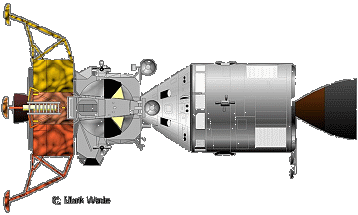 |
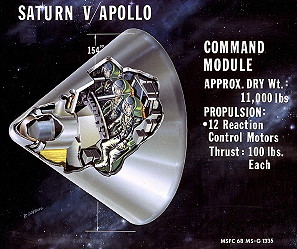 |
|
Source: www.astronautix.com/ |
|
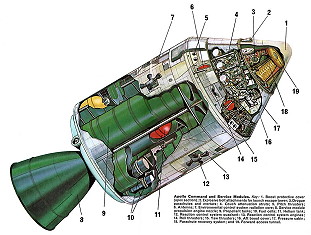 |
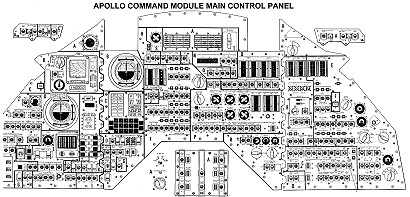 |
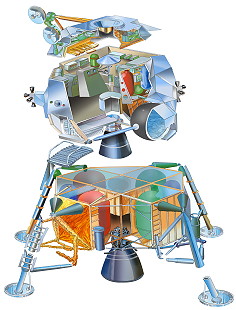 |
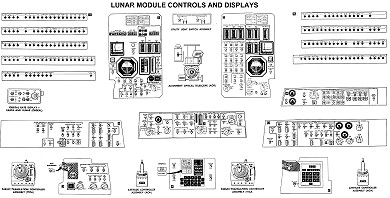 |
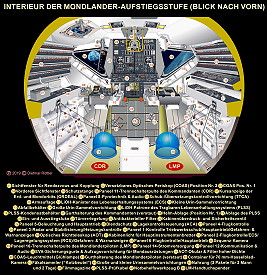 |
 |
 |
 |
 |
 |
 |
 |
 |
 |
 |
 |
 |
 |
 |
 |
 |
 |
 |
 |
 |
 |
 |
 |
 |
|
more photos from the moon |
|
more photos from moon orbit |
|
| © |  |
Last update on March 01, 2023.  |
 |